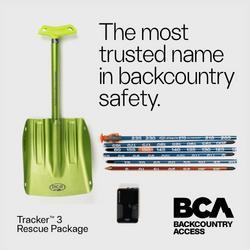Observation Date
2/25/2024
Observer Name
Kelly
Region
Provo » American Fork
Location Name or Route
Upper American Fork Canyon & Mary Ellen Gulch
Comments
3 snowpits below on southeast aspects above 10,000'. Layer of concern from 2/14/2024 interface was 27" (70cm) from the surface in the 10,870' pit and 20" (51cm) from the surface in the 10,100 pit, which matches the depth of the weak layer in the snowmobiler triggered avalanche on Miller Hill from 2/22/2024 where the weak layer was 22" (55cm) from the surface. In this case after 2 days of above freezing temperatures we were not seeing propagation with extended column tests on this layer in two of the snowpits and didn't find the layer in the third snowpit (highest elevation, maybe the most wind affected terrain?).
These 3 pits highlight the variability of slopes in the Central Wasatch right now and while this layer isn't showing us weaknesses with stability tests right now it was just three days ago. Warm temperatures are helping and lack of avalanche activity is a good sign. With the upcoming storm we will continue to watch this layer to see how it is reacting to additional snow and wind loading.
The last avalanches on this layer that were reported to the UAC:
The last avalanches on this layer that were reported to the UAC:
Salt Lake Region:
Caribou Basin- February 21, 2024 SE Aspect- 10,200'-2' deep x 100' wide (skier triggered intentionally)
Caribou Basin- February 23, 2024 East Aspect- 9,500' 4' deep x 100' wide (snowmobiler triggered)
(Maybe failed on PWL facets) Dog Dish on February 24th- East Facing 9,800'
Provo Region:
Miller Hill- February 22, 2024 SE Aspect- 9,800'-2' deep x 1400' wide (caught 2 people)
Elk Point- February 22, 2024 East Aspect 8,800' 14"-16" deep x100' wide x 700' vertical (unknown trigger)
Ogden Region:
Chilly Canyon Slabs-February 22, 2024 East Aspect-6,700'-12" deep x 250' wide (natural)



Today's Observed Danger Rating
Moderate
Tomorrows Estimated Danger Rating
None
Coordinates



